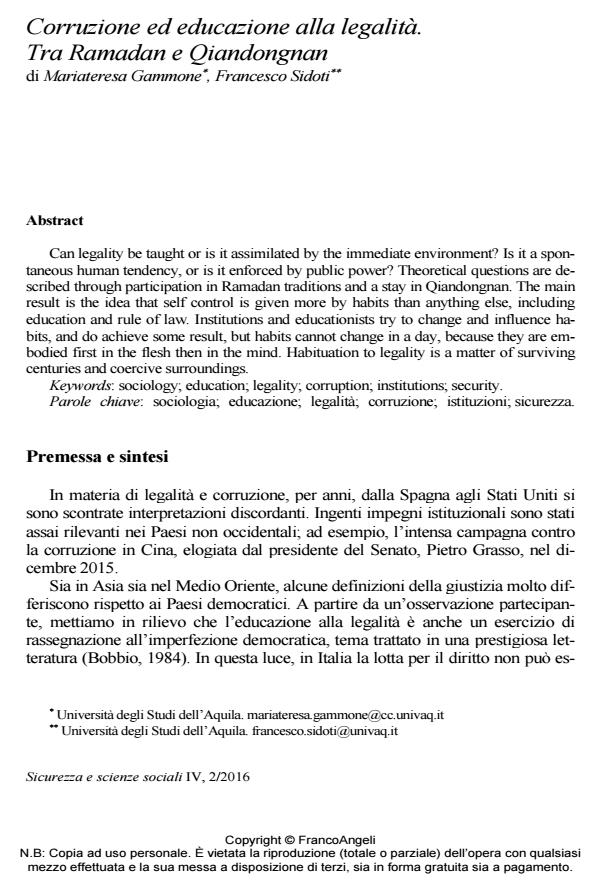Corruzione ed educazione alla legalità. Tra Ramadan e Qiandongnan
Titolo Rivista SICUREZZA E SCIENZE SOCIALI
Autori/Curatori Mariateresa Gammone, Francesco Sidoti
Anno di pubblicazione 2016 Fascicolo 2016/2
Lingua Italiano Numero pagine 16 P. 63-78 Dimensione file 589 KB
DOI 10.3280/SISS2016-002005
Il DOI è il codice a barre della proprietà intellettuale: per saperne di più
clicca qui
Qui sotto puoi vedere in anteprima la prima pagina di questo articolo.
Se questo articolo ti interessa, lo puoi acquistare (e scaricare in formato pdf) seguendo le facili indicazioni per acquistare il download credit. Acquista Download Credits per scaricare questo Articolo in formato PDF

FrancoAngeli è membro della Publishers International Linking Association, Inc (PILA)associazione indipendente e non profit per facilitare (attraverso i servizi tecnologici implementati da CrossRef.org) l’accesso degli studiosi ai contenuti digitali nelle pubblicazioni professionali e scientifiche
Can legality be taught or is it assimilated by the immediate environment? Is it a spontaneous human tendency, or is it enforced by public power? Theoretical questions are described through participation in Ramadan traditions and a stay in Qiandongnan. The main result is the idea that self control is given more by habits than anything else, including education and rule of law. Institutions and educationists try to change and influence habits, and do achieve some result, but habits cannot change in a day, because they are embodied first in the flesh then in the mind. Habituation to legality is a matter of surviving centuries and coercive surroundings.
Parole chiave:Sociologia; educazione; legalità; corruzione; istituzioni; sicurezza.
Mariateresa Gammone, Francesco Sidoti, Corruzione ed educazione alla legalità. Tra Ramadan e Qiandongnan in "SICUREZZA E SCIENZE SOCIALI" 2/2016, pp 63-78, DOI: 10.3280/SISS2016-002005